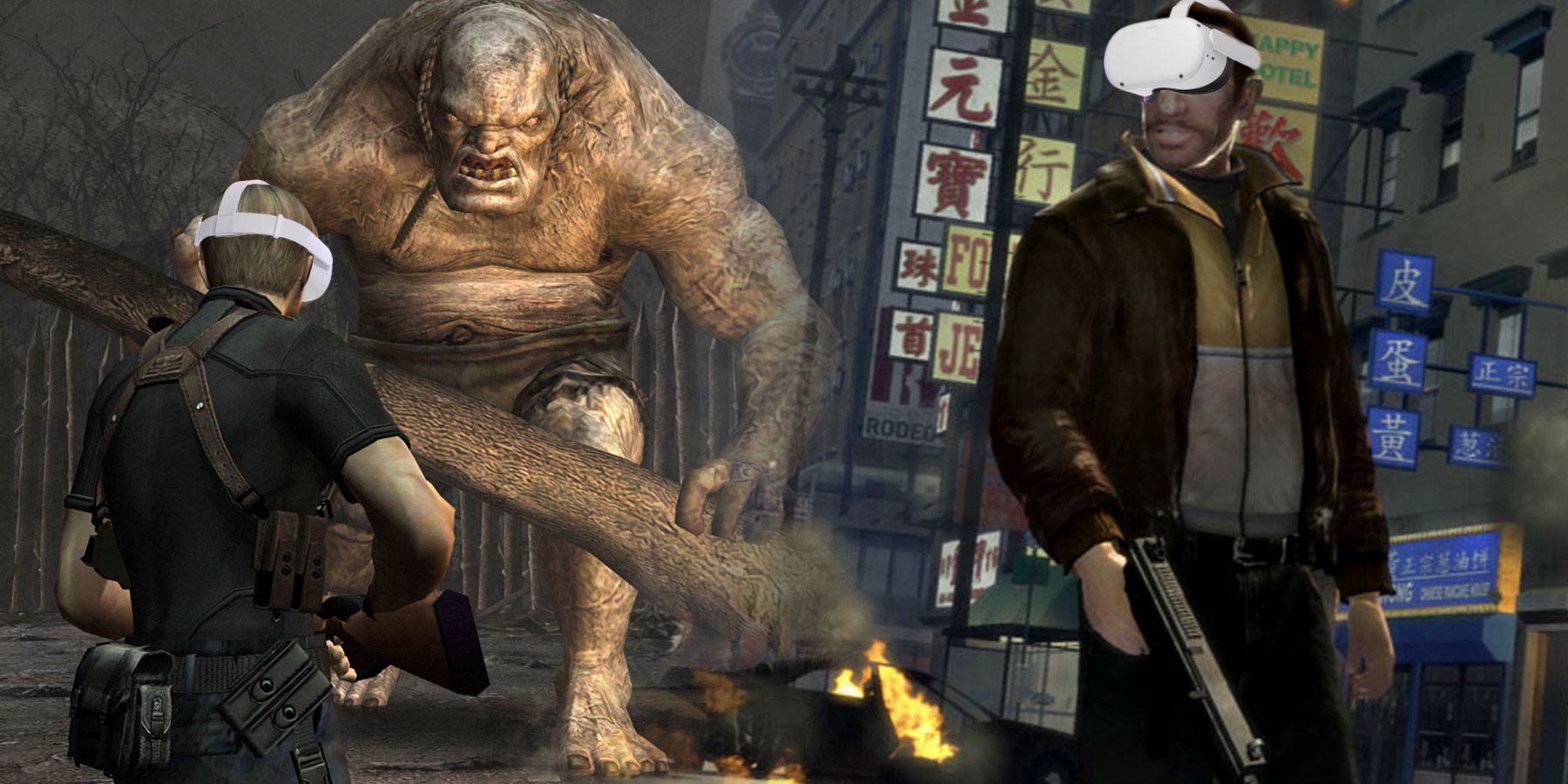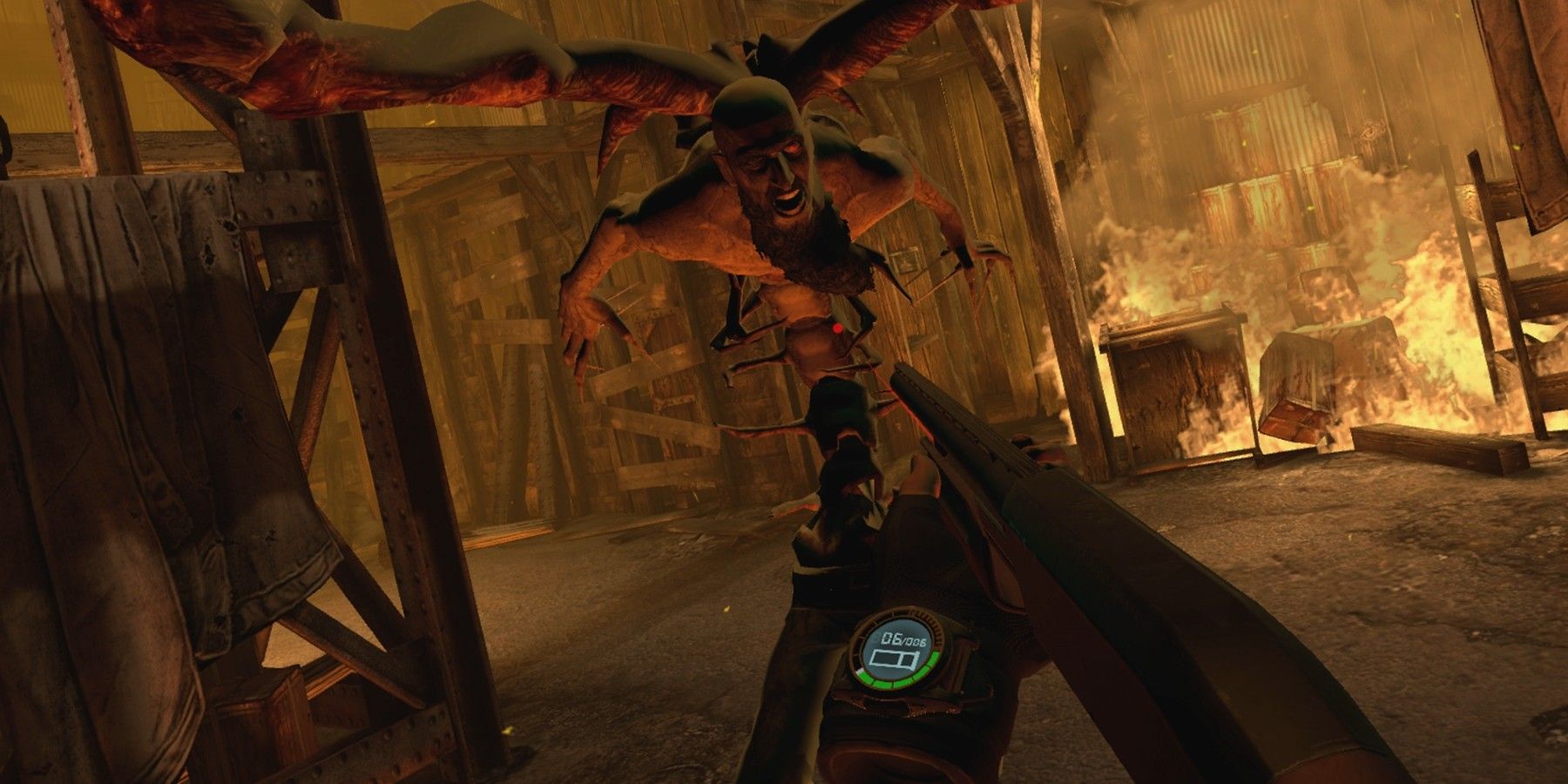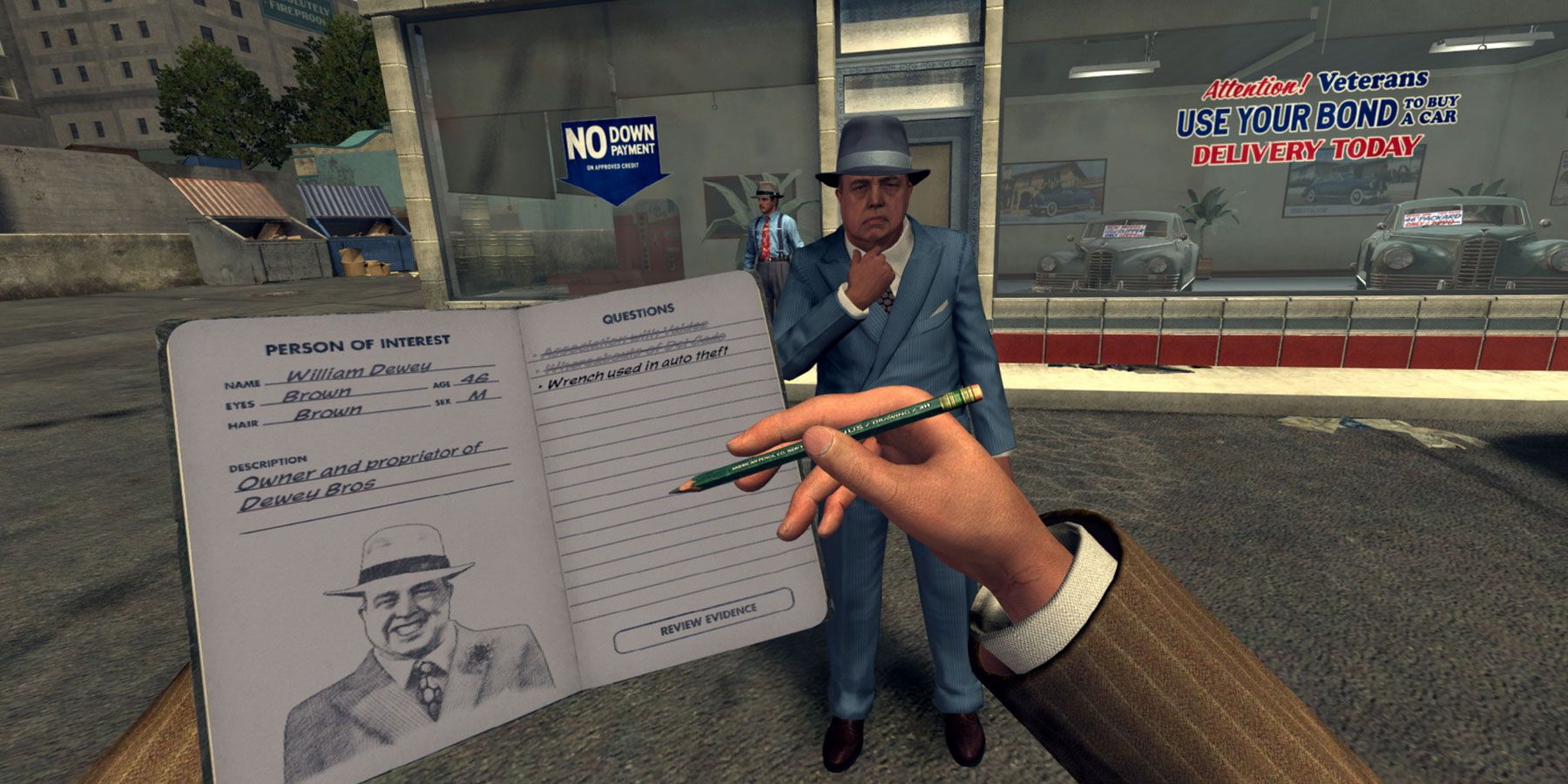Virtual Reality is full of potential and one of gaming's most exciting platforms that, as the years go on, is becoming more and more accessible. While there are plenty of new titles being developed for various VR headsets, one of the platform's biggest markets currently is VR editions of older titles. It makes sense why VR ports would be so popular, as fans love revisiting older games, but bringing a game to VR presents an opportunity to breathe new life into a classic title in a way that no other platform can do.
With the recent release of Resident Evil 4 VR and the announcement that Grand Theft Auto: San Andreas will be coming to the Oculos Quest 2, there seems to be a renaissance of sorts for VR ports of older titles which is good news. As the medium grows, it needs to prove its worth to people before they can truly invest in it, and there's no better way to do that than to present a beloved classic in a new way.
Perspective is Everything
While it might not seem like a huge deal, the perspective that a game chooses to use is a major part of defining the experience, so when a game shifts into first-person, developers can drastically alter the way it is played. That's why VR ports of games like Resident Evil 4 or L.A. Noire can feel like major departures from their source material, but something like DOOM VR simply feels like some mechanical changes have been made. By switching to a first-person perspective for the upcoming Grand Theft Auto: San Andreas VR, the studio behind it, Video Games Deluxe, is able to highlight certain details that might be missed when playing in the original third-person.
For example, car interiors in San Andreas VR will likely feature details that very few might see in the vanilla versions of the game. Likewise, Resident Evil 4 VR highlights plenty of details that fans might not have ever noticed before, from small things like the minute details included in the interiors of houses to the horrifying faces of the ever-encroaching mob in the early village section of the game. This newfound attention to detail that VR inherently gives to a video game helps view each title in a brand new light and give it a certain freshness that titles like The Elder Scrolls V: Skyrim or Resident Evil 4 might have lost from the many remasters and ports that they've received.
This change in perspective doesn't always work flawlessly, however, as studios need to consider the mechanics of a game before deciding if it's a good idea to port to VR. While interviewing suspects and solving cases in L.A. Noire VR feels like an immersive detective simulation that's unmatched by other titles, the sections of the game that require the player to investigate crime scenes don't work as well due to just how many details players are able to notice. A lot of the smaller details in the game's world end up being distracting from the clues that are intended to be noticed, making for a semi-confusing experience that has the player fixating on details that aren't a part of furthering the story. This type of issue isn't always present, but it's certainly something for studios to consider when trying to make a game work in virtual reality.
Reimagining over Remastering
Sometimes it can feel like a lot of the games coming out in any given year are remasters of older titles that, while certainly are nice to be able to revisit on modern consoles, can sometimes feel a little bit stale. VR editions of games, however, don't entirely fall in the remaster camp, as they change the experience of the base games in a pretty major way. As exampled above, changing the perspective of a game can make it feel completely different and like an entirely new experience altogether. That's why VR ports tend to feel a little bit more like game reimaginings over remasters because, while the base ideas and story might be the same, they're completely separate experiences.
The difference between VR ports and their original games can sometimes feel like the differences between Final Fantasy 7 and Final Fantasy 7 Remake, where the core story and ideas are the same, but the experience is entirely different. In FF7R, a lot more time is spent focusing on small background details in the original game, which is what VR ports also do since they take a familiar experience and show it in a brand new light. Skryim VR, for example, gives the world of Tamriel a true sense of scale and magnitude as it feels like a completely reimagined, immersive experience.
The gameplay in a VR port can also be altered to give players far more options when it comes to dealing with problems in a way that feels like a fresh take on an old formula. For example, Resident Evil 4 VR allows players to hold their combat knife in one hand and their gun in the other, meaning that, after shooting an enemy to the ground, they can stab them with the knife while looking around and shooting other incoming threats. This sort of mechanic isn't in the original version, but gives players more agency over their situations making the game feel completely new while also still being recognizable. Hopefully, future VR ports continue to provide unique takes on classic video games.
Resident Evil 4 VR is available now on Oculus Quest 2.



